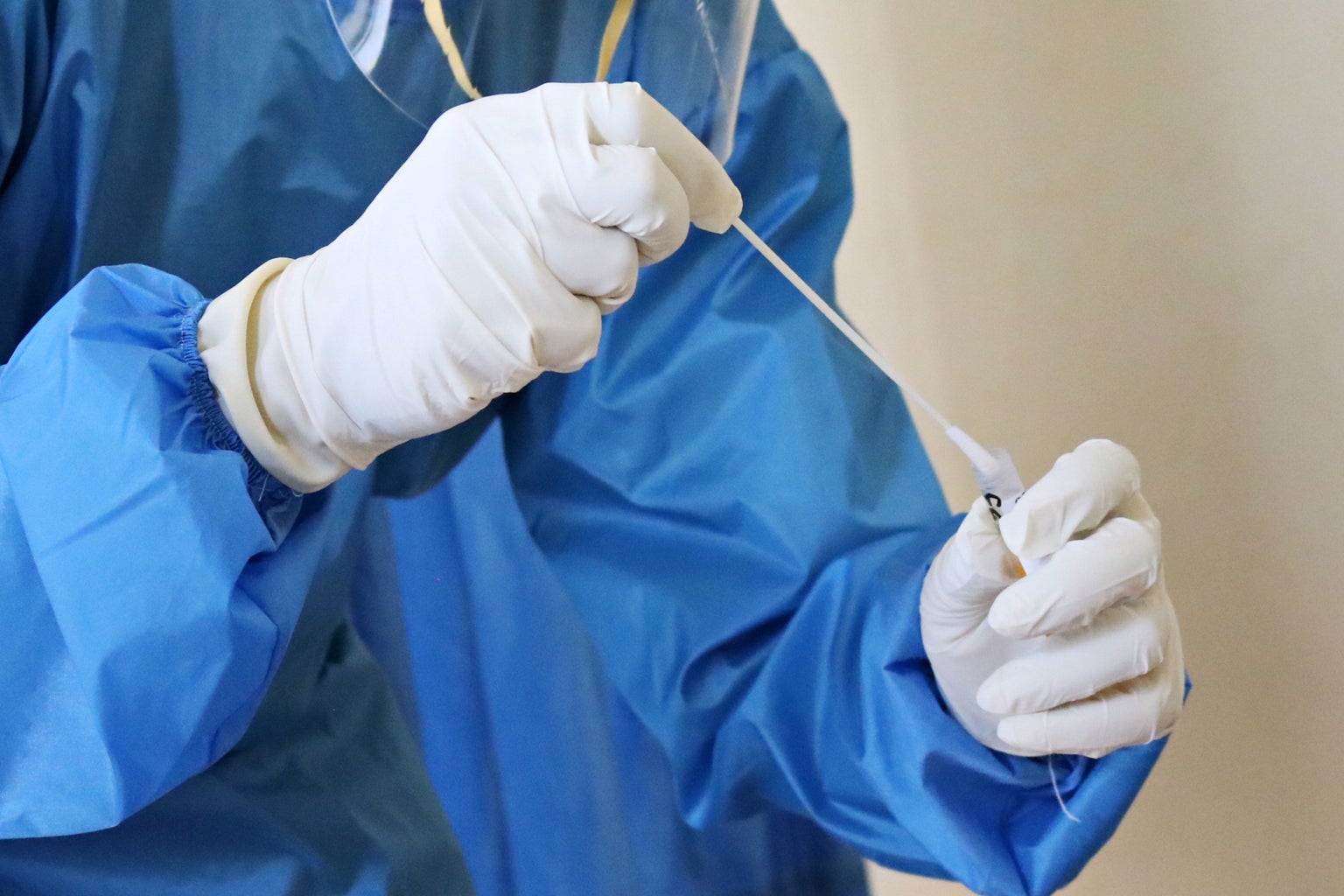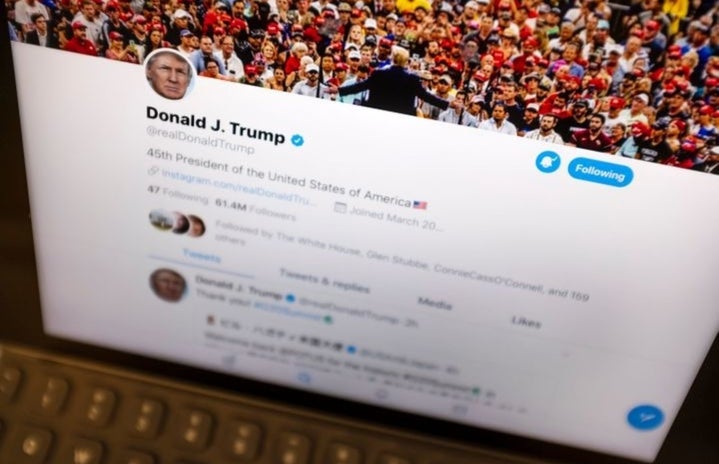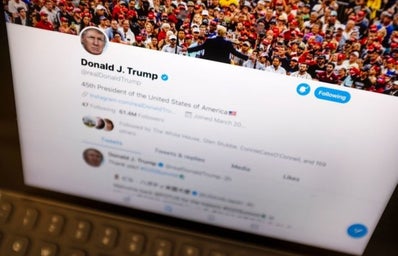In a recorded speech on Thursday, Trump stated, “The end of the pandemic is in sight.” Early the next morning Trump announced in a tweet that he and First Lady Melania had both tested positive for the virus. Shortly after, Trump’s physician, Sean Conley issued a statement saying that Trump and the first lady were both “well at this time” but that they would remain home at the White House during their convalescence. Trump had reportedly been hoarse during the day on Thursday but his inner circle had attributed this to the rigors of his campaign trail.
Sources told the New York Times that the president had trouble breathing on Friday and his oxygen levels dropped, prompting his doctors to administer supplemental oxygen. Ultimately the decision was made to airlift the president to Walter Reed Military Hospital where he could be more closely monitored with better equipment and 24-hour staffing should his condition worsen.
Hope Hicks, a senior White House advisor tested positive for the virus on Thursday, raising alarms within the White House to determine who else had been infected. Trump and Hicks had frequently been in close contact, and yet the president still went ahead with two public campaign events in New Jersey after it was made clear that Hicks had tested positive with the virus. Contact tracing is in process, and it is becoming evident that an ever-widening swath of the president’s allies and aides who he came into contact with are becoming infected. This past Monday, the entire city of Washington DC had just 14 new cases of COVID. The Trump White House alone now accounts for 23 cases and counting.
Although the president and First Lady are said to only be showing ‘mild symptoms,’ Trump’s age and weight put him at higher risk from the virus. At 74 and overweight with at least one underlying condition, Trump is more vulnerable to developing life-threatening complications, according to the CDC guidelines.

How have Trump’s language and behavior towards the virus impacted his diagnosis?
Since the beginning of the pandemic, Trump has either denied or downplayed the severity of COVID-19. At every opportunity, he minimized the threat of the novel coronavirus pandemic which has now killed more than 209 thousand Americans and more than a million people worldwide. For months, the president refused to wear a mask in public and frequently criticized others for doing so, including Vice President Biden on multiple occasions. In interviews with Bob Woodward for the journalist’s book “Rage,” the president admitted that he understood from his advisors just how lethal and fast-spreading the virus could be, and yet he consistently minimized the threat to the public saying that there was little to worry about and that the virus would disappear with the warm weather.
This is a grim reminder for many that the virus does not discriminate between rich and poor or weak and powerful. Others saw this as a sort of teachable moment for the president who at every turn refused to acknowledge the dangers of the virus. The president has disregarded simple precautions like wearing a mask and has taken risks in holding campaign rallies with little or no social distancing and few if any masks. In an interview with MSNBC, House Speaker, Nancy Pelosi even said that Trump’s behavior was a “brazen invitation” for the virus. Chief Washington correspondent Major Garrett said that the White House would have to account for its “cavalier” attitude towards setting coronavirus protocols.
The scientific and medical communities have despaired over Trump’s irresponsible comments and inaction. There is copious evidence that masks and social distancing aid in the prevention of Covid-19. By wearing a mask, one not only protects themselves from catching the virus but also inadvertently spreading it to others. The administration has also ignored the fact that coronavirus has killed twice as many black people and hospitalized nearly five times as many Hispanic and Latino people.
Since the outbreak of the pandemic in February, Trump had the opportunity to implement a national pandemic strategy, one that focused on mask requirements, extensive testing, contact tracing, and stay-at-home orders with social support. Instead, there was a broad denial of scientific research and too few available masks and tests. Trump’s positive test results show us what was there all along, that this virus is dangerous, and denying it puts yourself and countless others at risk.
How will this affect the election?
After three and a half years in which many feel they have lost the ability to be surprised by anything involving the current administration, both liberals and conservatives are left reeling by the news of President Trump’s diagnosis. The revelation that President Trump contracted coronavirus has caused much uncertainty about what this means for the November election.
With barely a month until election day, Trump is prevented from continuing on the campaign trail. The White House has not said how long the president will remain in isolation, but he has canceled his plans for the weekend and many believe he will be in quarantine for at least the next 14 days, the minimum required amount of time to quarantine according to the CDC. Considering that he will likely lose much of his remaining time on the campaign trail there could be ramifications for the outcome of the election. The next presidential debate is scheduled for Oct. 15 in Miami, but it is uncertain whether it will even take place.
In various polls, Trump has consistently trailed Biden for most of the year. Trump’s numbers give him a ranking among the weakest first-term presidents in history. His recent diagnosis may result in a further drop in polling numbers as Americans grapple with the actuality of the pandemic. Up to this point, the president has done his best to keep the focus of his campaign on anything other than the pandemic. He has sought to focus voter’s attention on violence in cities as a result of recent protests, his Supreme Court nomination of Amy Coney Barrett, the fallacies of mail-in voting, and Biden’s relationship with liberals. The positive diagnosis for the president will hopefully be a wake-up call to voters to believe in the science behind the virus.
Senate Majority Leader, Mitch McConnell has said that he plans to move forward with confirmation hearings for Trump’s SCOTUS nominee, but the virus could potentially derail this. Worry is growing among republicans on capitol hill as more and more senators contract the virus, and illnesses among the members of the judiciary committee especially could delay the confirmation process for Judge Barrett. Democrats are pushing that a Supreme Court nominee should be left to whoever wins the election, and are emphasizing Barrett’s views that would put the Affordable Care Act and abortion rights in jeopardy.
If the President becomes incapacitated from the coronavirus, his powers need to be transferred to Vice-President Mike Pence under the Twenty-Fifth Amendment. This happened under George Bush in 2002 and 2007 where he briefly handed his responsibilities to Dick Cheney while undergoing colonoscopies. So far, Trump has shown no signs of worsening, and in an effort to show that the reelection effort is continuing he has launched “operation MAGA.” The Trump campaign has called on top surrogates, coalitions, and supporters to “carry the campaign forward” while the president is out of action. No president has fallen ill this close to an election, and we will all just have to wait and see what unfolds over the next thirty days.

Sources: 1, 2, 3, 4, 5, 6, 7, 8, 9, 10, 11, 12, 13, 14, 15, 16, 17, 18, 19, 20, 21, 22, 23
Photos: Her Campus Media



